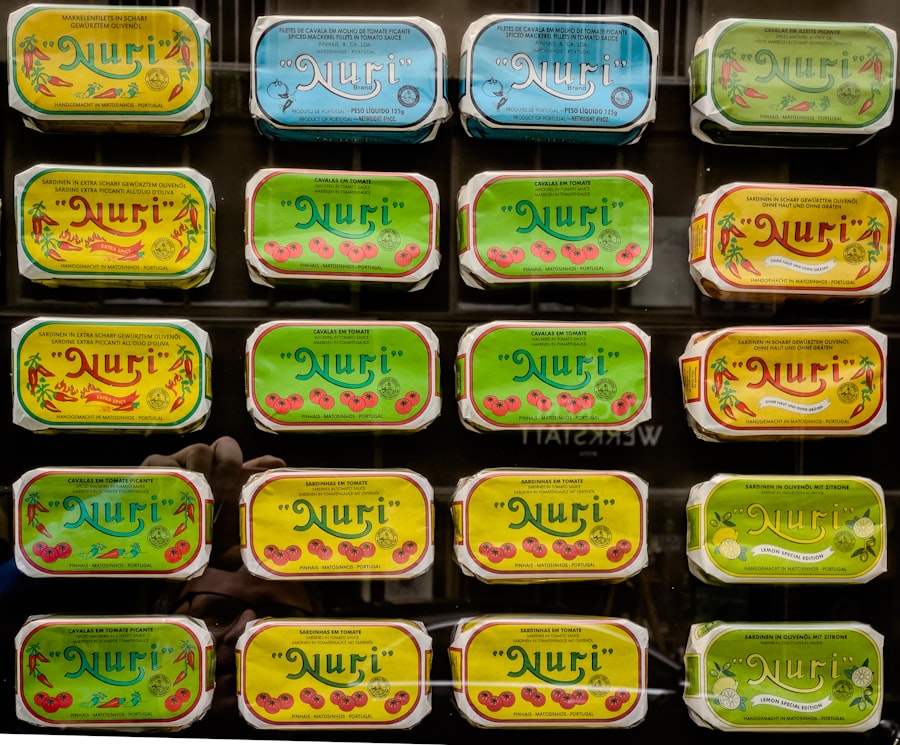The kitchen, often regarded as the heart of the home, is not only a place for culinary creativity but also a potential breeding ground for various pests. These unwelcome visitors can disrupt the harmony of a household, posing health risks and causing damage to food supplies. Kitchen pests, ranging from ants and cockroaches to rodents and pantry moths, thrive in environments where food is readily available.
Understanding the nature of these pests and their habits is crucial for maintaining a clean and safe kitchen. The presence of pests in the kitchen can lead to more than just an unsightly mess; it can also result in contamination of food and surfaces. Many pests carry diseases that can be transmitted to humans, making it essential for homeowners to be vigilant.
By recognizing the signs of pest activity and implementing preventive measures, individuals can protect their kitchens from these intruders and ensure a healthy living environment.
Key Takeaways
- Kitchen pests can be a common problem and can include insects, rodents, and other unwanted creatures.
- Common kitchen pests to look out for include cockroaches, ants, rodents, pantry moths, and fruit flies.
- Prevent kitchen pests by keeping the kitchen clean, sealing food in airtight containers, and fixing any leaks or moisture issues.
- Proper food storage is essential to avoid attracting pests, including storing food in sealed containers and keeping the kitchen free of crumbs and spills.
- Regular cleaning and sanitizing of the kitchen can help keep pests away, including wiping down surfaces, taking out the trash, and cleaning up spills promptly.
Common Kitchen Pests to Look Out For
Among the most common kitchen pests are ants, which are often seen marching in lines toward food sources. These tiny creatures can infiltrate homes through the smallest of cracks, seeking out crumbs and spills. Once they find a food source, they leave pheromone trails that attract more ants, leading to larger infestations.
Homeowners should be particularly cautious during warmer months when ant activity tends to increase. Cockroaches are another notorious kitchen pest that can evoke feelings of disgust and fear. These resilient insects are nocturnal and tend to hide in dark, damp areas during the day.
They are attracted to food remnants and can quickly multiply if not addressed promptly. The presence of cockroaches not only indicates poor sanitation but also poses health risks, as they can carry pathogens that contaminate food and surfaces. Identifying these pests early on is vital for effective control.
Tips for Preventing Kitchen Pests

Preventing kitchen pests requires a proactive approach that combines cleanliness with strategic planning. One of the most effective ways to deter pests is by maintaining a clean kitchen environment. Regularly wiping down countertops, sweeping floors, and promptly cleaning up spills can significantly reduce the likelihood of attracting unwanted visitors.
Additionally, ensuring that food is stored properly and that trash is disposed of regularly can help eliminate potential food sources for pests. Another key strategy in pest prevention is to minimize clutter in the kitchen. Pests often seek refuge in dark, hidden spaces, so keeping cabinets organized and free from unnecessary items can make it easier to spot any signs of infestation.
Homeowners should also be mindful of their grocery shopping habits; purchasing items in bulk can lead to pantry moths if not stored correctly. By being vigilant and adopting these preventive measures, individuals can create an environment that is less inviting to pests.
Proper Food Storage to Avoid Pests
| Food Item | Proper Storage Method | Potential Pests |
|---|---|---|
| Grains (rice, pasta, flour) | Store in airtight containers | Weevils, moths |
| Cereal | Seal in airtight bags or containers | Weevils, beetles |
| Dried fruits and nuts | Keep in sealed containers | Moths, beetles |
| Sugar | Store in airtight containers | Ants, beetles |
| Pet food | Keep in sealed containers | Rodents, ants |
Proper food storage is a cornerstone of pest prevention in the kitchen. Storing food in airtight containers not only keeps it fresh but also prevents pests from accessing it. Glass or plastic containers with tight-fitting lids are ideal for keeping pantry items such as grains, cereals, and snacks safe from intruders.
Additionally, using vacuum-sealed bags for bulk items can further reduce the risk of pest infestations. It is also important to regularly check expiration dates and discard any expired or spoiled food items. Pests are often attracted to decaying food, so maintaining an organized pantry can help identify potential issues before they escalate.
By implementing these food storage practices, homeowners can significantly decrease the chances of attracting pests into their kitchens.
Cleaning and Sanitizing to Keep Pests Away
A thorough cleaning routine is essential for keeping pests at bay in the kitchen. Regularly sanitizing surfaces where food is prepared can eliminate any lingering food particles or residues that might attract pests. This includes wiping down countertops, stovetops, and tables with disinfectant solutions that are safe for food preparation areas.
Additionally, cleaning appliances such as microwaves and ovens should not be overlooked, as crumbs and spills can accumulate in these spaces. In addition to surface cleaning, homeowners should pay attention to their sinks and dishwashers. Food particles can easily become trapped in drains, providing a feast for pests like fruit flies and cockroaches.
Regularly cleaning drains with hot water or vinegar can help prevent these issues. By establishing a consistent cleaning regimen, individuals can create an environment that is less hospitable to pests.
Identifying and Sealing Entry Points for Pests

Identifying entry points for pests is a critical step in preventing infestations in the kitchen. Pests can enter homes through tiny cracks and gaps around windows, doors, and even plumbing fixtures. Conducting a thorough inspection of the kitchen area can help homeowners pinpoint potential entryways that need attention.
Sealing these gaps with caulk or weather stripping can effectively block pests from gaining access. In addition to sealing visible entry points, it is important to consider less obvious areas where pests might enter. For instance, vents and exhaust fans can serve as pathways for insects and rodents alike.
Installing screens over vents or using mesh materials can provide an additional layer of protection against unwanted visitors. By taking these proactive measures, homeowners can significantly reduce the likelihood of pest invasions.
Using Natural Pest Deterrents in the Kitchen
For those who prefer a more eco-friendly approach to pest control, natural deterrents can be highly effective in keeping kitchen pests at bay. Essential oils such as peppermint, tea tree, and lavender have been shown to repel various insects due to their strong scents. Homeowners can create homemade sprays by diluting these oils with water and applying them around entry points or areas where pests are commonly seen.
Another natural deterrent is diatomaceous earth, a fine powder made from fossilized algae that is safe for humans but lethal to insects with exoskeletons. Sprinkling this powder in areas where pests are likely to travel can help eliminate them without the use of harsh chemicals. By incorporating these natural solutions into their pest prevention strategies, individuals can maintain a pest-free kitchen while being mindful of their environmental impact.
Regular Inspections to Monitor Pest Activity
Regular inspections are an essential component of effective pest management in the kitchen. Homeowners should make it a habit to check for signs of pest activity on a routine basis. This includes looking for droppings, shed skins, or nests that may indicate an infestation is present.
Early detection is key; addressing any issues promptly can prevent them from escalating into larger problems. In addition to visual inspections, homeowners may also consider setting up traps or monitoring devices in strategic locations around the kitchen. These tools can help track pest activity over time and provide valuable insights into when and where infestations may occur.
By staying vigilant and conducting regular inspections, individuals can take proactive steps toward maintaining a pest-free environment.
Handling Food Waste to Prevent Pest Infestations
Properly managing food waste is crucial for preventing pest infestations in the kitchen. Many pests are attracted to decomposing organic matter, making it essential for homeowners to dispose of food scraps promptly and correctly. Keeping trash cans sealed with tight-fitting lids can help deter pests from accessing waste materials.
Additionally, composting food scraps can be an effective way to reduce waste while minimizing pest attraction when done correctly. Homeowners should ensure that compost bins are kept away from the kitchen area and are properly maintained to avoid attracting unwanted visitors. By adopting responsible waste management practices, individuals can significantly decrease the likelihood of pest problems in their kitchens.
Seeking Professional Help for Severe Pest Problems
In some cases, despite best efforts at prevention and control, pest problems may escalate beyond what homeowners can manage on their own. When faced with severe infestations or persistent issues, seeking professional help may be necessary. Pest control experts have the knowledge and tools required to effectively address infestations while ensuring safety for both residents and pets.
Professional pest control services often employ integrated pest management strategies that focus on long-term solutions rather than temporary fixes. This may include thorough inspections, targeted treatments, and ongoing monitoring to ensure that pests do not return after treatment. By enlisting the help of professionals when needed, homeowners can regain control over their kitchens and protect their families from potential health risks associated with pests.
Conclusion and Recap of Preventative Measures
In conclusion, maintaining a pest-free kitchen requires a multifaceted approach that encompasses cleanliness, proper food storage, regular inspections, and proactive measures against entry points. By understanding common kitchen pests and implementing effective prevention strategies—such as using natural deterrents and managing food waste—homeowners can create an environment that is inhospitable to unwanted visitors. Regular cleaning routines combined with vigilant monitoring will go a long way in ensuring that kitchens remain safe havens for culinary creativity rather than breeding grounds for pests.
When faced with severe infestations, seeking professional assistance is always an option worth considering. Ultimately, by prioritizing prevention and taking action at the first signs of trouble, individuals can enjoy peace of mind knowing their kitchens are protected from pests.
As the holiday season approaches, ensuring your kitchen is pest-proof becomes essential to maintain a clean and welcoming environment for your guests. While you’re taking steps to keep unwanted critters at bay, you might also consider enhancing the overall comfort and tranquility of your home. An interesting read that complements your pest-proofing efforts is an article on affordable ways to soundproof your home. This piece provides valuable insights into creating a peaceful atmosphere, which can be particularly beneficial during the bustling holiday season when noise levels tend to rise. By addressing both pest control and soundproofing, you can ensure a more pleasant and stress-free holiday experience.
FAQs
What are common pests found in the kitchen?
Common pests found in the kitchen include ants, cockroaches, rodents, fruit flies, pantry moths, and weevils.
How can I pest-proof my kitchen before the holidays?
To pest-proof your kitchen before the holidays, you can start by sealing any cracks or crevices, keeping food in airtight containers, regularly cleaning up crumbs and spills, taking out the trash regularly, and inspecting and cleaning your pantry and cabinets.
Why is it important to pest-proof the kitchen before the holidays?
Pest-proofing the kitchen before the holidays is important to prevent pests from contaminating food, spreading diseases, and causing damage to your home.
What are some natural ways to keep pests out of the kitchen?
Some natural ways to keep pests out of the kitchen include using essential oils like peppermint or lavender, placing bay leaves in pantry shelves, using vinegar or lemon juice to clean surfaces, and using diatomaceous earth as a non-toxic pest control method.
How can I prevent fruit flies in the kitchen?
To prevent fruit flies in the kitchen, you can store ripe fruits in the refrigerator, keep kitchen surfaces clean and dry, take out the trash regularly, and use a fruit fly trap if necessary.






